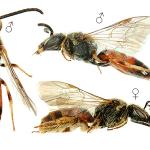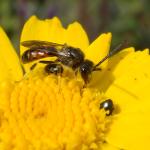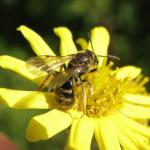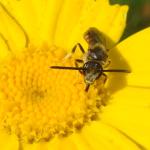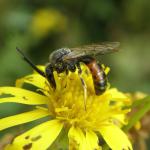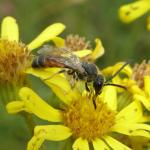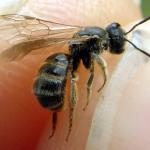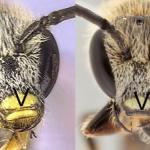A very similar bee to Lasioglossum calceatum (Scopoli) but not as frequent as that species. The males are most easily separated by the possession of a yellow labrum, that of the male Lasioglossum calceatum being usually black or blackish. The females are more difficult but in albipes the propodeum is less sculptured posterolaterally. They are also smaller and with a longer, less-rounded face.
Found throughout most of Britain, from the Isles of Scilly to Kent and north to parts of Scotland, but less commonly there. Also known from the Channel Islands and the Isle of Man. In Ireland, ranging north to Counties Donegal, Antrim and Down.
Abroad, a trans-Palaearctic species, ranging from the British Isles to Japan, and north to Sweden. The southern limit of its range in the west Palaearctic is in the mountains: Iberia, south to Serra de Estrela; Corsica; Italy, Monte Pollino; the high mountains of Greece south to Taygetos; north-east Turkey, but an isolated population in the south at Ankara Province (A W Ebmer, pers. comm.).
This species is not regarded as scarce or threatened.
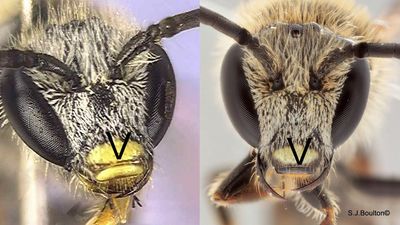
Males of Lasioglossum calceatum and Lasioglossum albipes are almost impossible to separate to species from photographs without a view of the colour of the labrum. The labrum is a small oval plate located below the clypeus on the front of the head, and it is often "folded up" underneath the head in front of the mandibles making it difficult to see. Both species have yellow and black markings on the clypeus, so it is important to be sure that you are looking at the labrum itself, not the clypeus. The following photos show the faces of males of both species with the labrum "unfolded" and visible.The Lasioglosum albipes male, on the left, has a yellow labrum below the clypeus. The Lasioglossum calceatum male, on the right, has a black labrum below the clypeus.
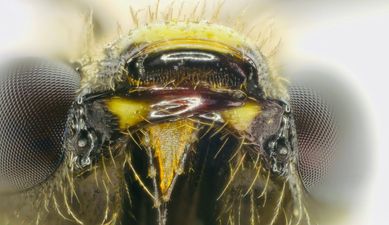
If the labrum is folded away, then a photo of the head from underneath is required to make an ID. This is a Lasioglossum calceatum male with the oval black labrum "folded away" under the head in front of the mandibles. The yellow colouring visible in front of the labrum is the lower part of the clypeus. Photos credit Andy Kaey
A woodland edge species, also found in clearings, glades and scrubby areas. At Dungeness in Kent, found on the large shingle area, sometimes commonly (pers. obs.).
The female flies from mid-March to early October, whilst the male appears by early July, flying to mid-October.
A primitively eusocial mining bee. The foundress female digs a vertical main burrow to a depth of about 15cm. The arrangement of the cells is open to question. One report (Verhoeff, 1897) stated that the cells are sessile, i.e. without a tunnel from the main burrow, whilst in artificial conditions the cells were constructed in a cluster supported by pillars within a chamber (Plateaux-Quénu, 1989), as found in Lasioglossum calceatum. Between 20% and 50% of the first brood are males but although many first brood females mate they remain as workers with undeveloped ovaries. These workers prepare about 50 brood cells in which males and reproductive females are produced. These females mate and dig hibernacula by deepening the main burrow of the maternal nest. There are reports of the old foundress females surviving the winter and establishing new nests in the spring (Plateaux-Quénu, 1992).
The bees visit a variety of flowers for nectar.
There are no recorded cleptoparasites in Britain, but in continental Europe Sphecodes monilicornis (Kirby) is a cleptoparasite; possibly this association also exists in Britain (S Roberts, pers. comm.).
2022


